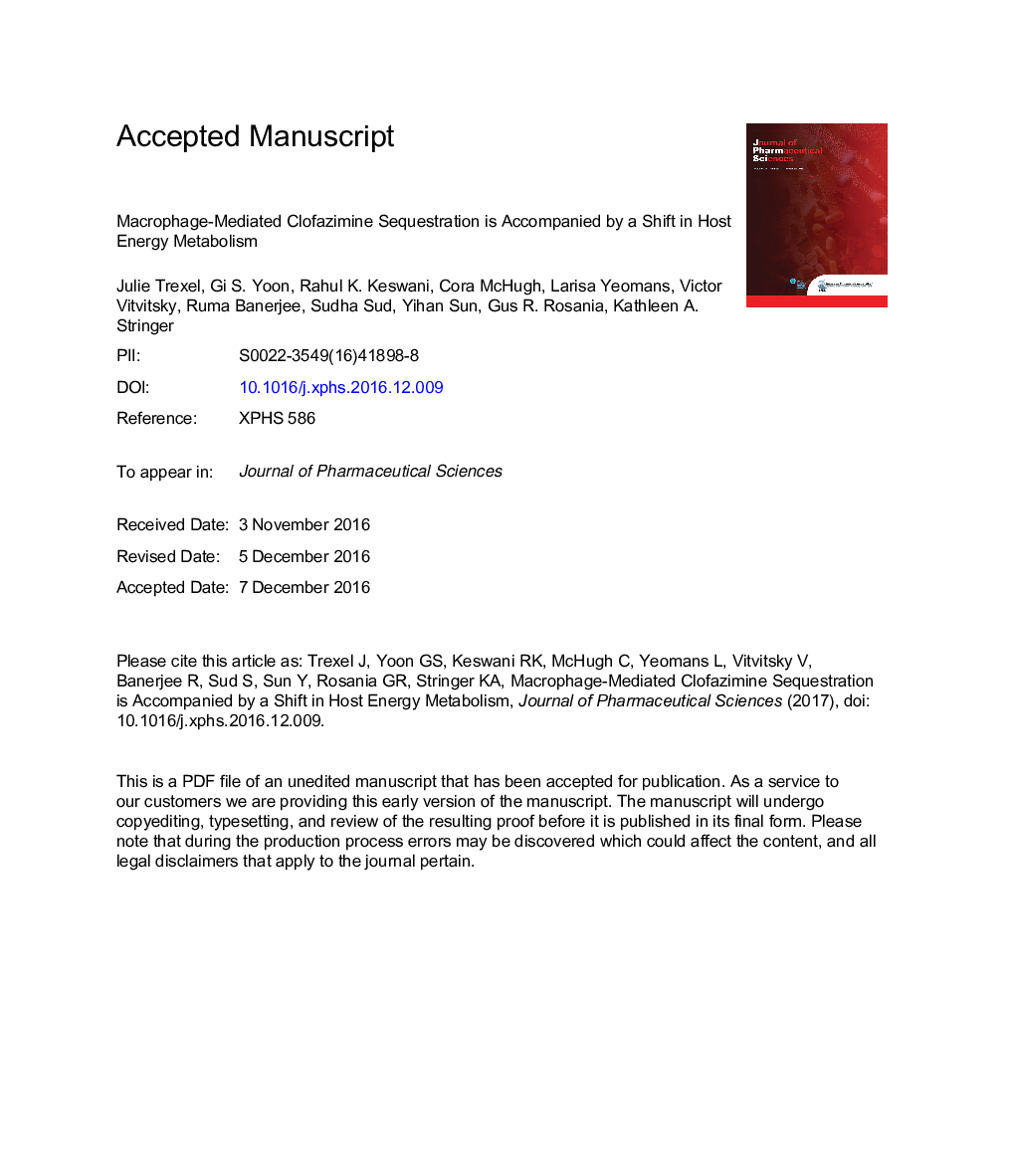| Article ID | Journal | Published Year | Pages | File Type |
|---|---|---|---|---|
| 8514361 | Journal of Pharmaceutical Sciences | 2017 | 49 Pages |
Abstract
Prolonged (8 weeks) oral administration of clofazimine results in a profound pharmacodynamic response-bioaccumulation in macrophages (including Kupffer cells) as intracellular crystal-like drug inclusions (CLDIs) with an associated increase in interleukin-1 receptor antagonist production. Notably, CLDI formation in Kupffer cells concomitantly occurs with the formation of macrophage-centric granulomas. Accordingly, we sought to understand the impact of these events on host metabolism using 1H-nuclear magnetic resonance metabolomics. Mice received a clofazimine or vehicle-enriched (sham) diet for at least 8 weeks. At 2Â weeks, the antimicrobial activity of clofazimine was evident by changes in urine metabolites. From 2 to 8 weeks, there was a striking change in metabolite levels indicative of a reorientation of host energy metabolism paralleling the onset of CLDI and granuloma formation. This was evidenced by a progressive reduction in urine levels of metabolites involved in one-carbon metabolism with corresponding increases in whole blood, and changes in metabolites associated with lipid, nucleotide and amino acid metabolism, and glycolysis. Although clofazimine-fed mice ate more, they gained less weight than control mice. Together, these results indicate that macrophage sequestration of clofazimine as CLDIs and granuloma formation is accompanied by a profound metabolic disruption in energy homeostasis and one-carbon metabolism.
Keywords
Related Topics
Health Sciences
Pharmacology, Toxicology and Pharmaceutical Science
Drug Discovery
Authors
Julie Trexel, Gi S. Yoon, Rahul K. Keswani, Cora McHugh, Larisa Yeomans, Victor Vitvitsky, Ruma Banerjee, Sudha Sud, Yihan Sun, Gus R. Rosania, Kathleen A. Stringer,
